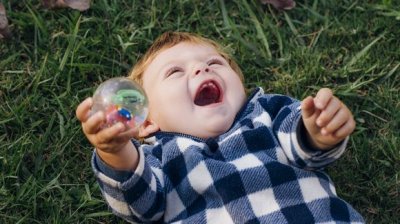外语教学五年级英语阅读榜单
外语教学五年级英语阅读榜单。大家都知道中美文化的差异因此我们国家和美国教育也有着很大的差别。大思英语小编对中美小学英语阅读分析认为,与美国同龄小学生相比,中国小学生存在英语阅读上的先天性差距。那么美国五年级小学生英语阅读能力是如何培养的呢?又有哪些优秀且经典的小学英语书单可供提升英语阅读能力呢?下面就来一一探讨下。

外语教学五年级英语阅读榜单
Alexander, LloydThe Arcadians Banks, JacquelineEgg-Drop Blues
Byars, BetsyBingo Brown's Guide to RomanceCarey, PeterThe Big Bazoohley
阅读能力可从两个维度上考量——阅读广度和阅读深度,无论是美国小学英语还是中国小学英语阅读能力的考评都概莫能外。无论是质的要求还是量的要求,都是数量级的差别。
Hesse, KarenThe Music of DolphinsKing-Smith, DickThree Terrible TrinsLester, HelenAuthor: A True StoryLowry, LoisAnastasia at this AddressMurphy, JimThe Boys' War: Confederate and Union Soldiers Talk About the...
按CCSS全美教学标准要求,美国小学毕业生至少需要阅读1404本课外读物,阅读量占到全部K12年级阅读量的77.6%,且涉及故事、诗歌、戏剧、信息类等13种文体。在阅读深度上,美国要求小学毕业生不仅能够对文章细节与主旨进行精准理解,还要求对文章结构与内在逻辑进行严密分析!
Myers, Walter DeanScorpionsPaterson, KatherineThe Great Gilly HopkinsPaulsen, GaryThe Voyage of the FrogPeck, RichardA Long Way from ChicagoRobinet, HarrietteForty Acres and Maybe a Mule
与美国小学英语阅读能力相比,中国小学生5-6年级的语文教学大纲,不仅对课外阅读量要求低,而且在阅读深度上只要求做到初步理解句、段、篇之间的联系和分析概括文章主旨。可见,中国对孩子阅读基本功的教育可谓具有先天缺陷!
Rowling, J.K.Harry Potter and the Sorcerer's StoneTrumble, KellyCat MummiesWardlaw, Lee101 Ways to Bug Your ParentsViorst, JudithSad Underwear and Other ComplicationsWarren, AndreaOrphan Train Rider: One Boy's True Story
外语教学五年级英语阅读榜单。阅读以上分享,大家对中美两国学生英语阅读的差距有了一定了解,当然这是必然的,英语不是我们的母语所以差距也是情理之中的。中国的同学想要赶上美国学生也是有机会的,只要我们在平时学习中认真努力。下面小编带来五年级上册英语知识点总结,一起来学习吧。

Unit 1
重点单词
old 老的,年纪大的
young 年轻的,岁数不大的
funny 滑稽的,可笑的
kind 体贴的,慈祥的,宽容的
strict 要求严格的,严厉的
polite 有礼貌的,客气的
shy 羞怯的,腼腆的,怕生的
helpful 有用的,愿意帮忙的
clever 聪明的,聪颖的
hard-working 工作努力的,辛勤的
music 音乐
art 美术
science 科学
English 英语
maths/math 数学
Chinese 语文,中文
sometimes 有时,间或
robot 机器人
speak 会说,会讲(某种语言);用(某种语言)说话
重点句子
1. —Who’s your art teacher? 谁是你的美术老师?
—Mr. Jones.琼斯老师。
2. —Is he young? 他年轻吗?
—Yes, he is. 是的,他年轻。 —No, he isn’t. 不,他不年轻。
3. —What’s Wu Yifan like? 吴一帆怎样?
—He’s hard-working. 他很勤奋。
4. Ms Wang will be our new Chinese teacher. 王老师会成为我们的新语文老师。
5. He is very helpful at home. 他在家很能干。
6. Robin is short but strong. 罗宾个子矮,但是身体强壮。
7. He can speak Chinese and English. 他会说中文和英语。
8. He makes me finish my homework. 他让我写作业。
语 音
字母y在单词中的发音:
1、双音节或多音节词末发[ i ]。
例:baby婴儿 happy开心的 windy 有风的sunny晴朗的sorry对不起candy 糖果many许多family家庭party 聚会
课外补充:
2、y在单音节词末发[ ai ]
例:by 乘坐 my 我的 why 为什么 cry 哭 fly 飞
重点知识及语法
1、询问他人的外貌或性格:
-What’s he/she like? - He/She is kind/…
2、一般疑问句的问与答:
—Is he/she…?—Yes, he/she is. —No, he/she isn’t.
—Do you know…? —Yes, I do. —No, I don’t
3、be动词的三种形式am, is, are与人称代词连用的用法: I + am,
He, she, it,人名、物名+ is We, you, they + are
4、Ms., Miss, Mr., Mrs.的区别: Ms. [miz](缩略词)(用于女子的姓氏或姓名前,不指明婚否)女士; Miss [mis](用于未婚女子的姓氏或姓名前,以示礼貌)小姐,女士; Mr. [mist?](mister的缩略词)(用于男子的姓氏或姓名前)先生; Mrs. [misiz](用于已婚女子的姓氏或姓名前)太太;夫人。
5、and和but的区别:
and 和,与,表并列关系 He is tall and thin. 他又高又瘦。
but 但是,表转折关系 He is short but strong. 他个子矮,但是身体强壮。
重点作文
1、介绍自己、朋友或老师等熟悉的人物,如:My …teacher/friend/…。
思路导引
(1)开头:交代人物的身份 I have a/an…He/She is…
(2)中间:
1)体貌 He/ She is tall/strong… He/She has …hair/eyes…
2)性格 He/She is strict/kind…
3)爱好 He/She likes playing pingi-pong/… 或He/She often read books/… on the weekend.
(3)结尾:评价人物或抒发对人物的情感 I like him/her very much.
2、范文:
(1)课本P9 Read and write
(2)My Chinese teacher
I have a new Chinese teacher. She is Ms. Chen. She is tall and thin. She has big eyes and long black hair. She is kind and funny. Sometimes she is strict, too. She is hard-working. She likes reading. Her class is so much fun. We all like her.
Unit 2
重点单词
Sunday (Sun.) 周日
Monday (Mon.) 周一
Tuesday (Tue./Tues.) 周二
Wednesday (Wed./Weds.) 周三
Thursday (Thur./Thurs.) 周四
Friday (Fri.) 周五
Saturday (Sat.) 周六
weekend 周末(周六、日)
wash my clothes
洗衣服 watch TV
看电视 do homework
做作业 read books 看书
play football 踢足球
on the weekend 在周末
play sports/do sports 做体育运动
listen to music 听音乐
play ping-pong 打乒乓球
重点句子
1. —What do you have on Thursdays? 星期四你们上什么课? —I have math, English and music. 我们上数学、英语和音乐课。
2. —What do you do on Thursdays, Grandpa? 爷爷,星期四你要做什么? —I have a cooking class with your grandma. 我和你奶奶去上烹饪课。
3. —Do you often read books in this park? 你经常在这个公园看书吗? —Yes, I do. 是的 —No, I don’t. 不是
4. Look at my picture. 看我的图片。
5. You look tired. 你看起来很累。
6. You should play sports every day. 你应该每天做运动。
语 音
字母组合ee, ea在单词中的的发音:[ i: ]
例:feet 脚 beef牛肉meet 遇见see看见feed喂养tea茶read阅读eat吃repeat 重复
注:
1、ee组合绝大部分发长音[ i: ],只有少部分发短音[ i ],如:coffee 咖啡
2、ea字母组合除了发[ i: ],还有可能发[ e ]等发音,如:bread 面包,或者发[ ei ],如:great 好极了
重点知识及语法
1、 询问做什么事/活动:—What do you do …? —I often play ping-pong…
询问星期几上什么课:—What do you have on…? —We have English class…
2、一般疑问句的问与答:—Do you often read books? —Yes, I do. —No, I don’t. 3、 on+具体某一天(年月日,星期),如:on Monday/Tuesday… 课外 at+具体时刻(…点钟),如:at 12 o’clock 在十二点整 补充: in+大致时间(年月,早中晚),如:in 2014 在2014年 in the morning/afternoon/evening
4、play + 球类、棋类、娱乐活动,如:play football/ping-pong 补充:play + the + 乐器(第四单元知识),如:play the pipa/piano/violin…
重点作文
1、描写一周的生活,如:My week
思路导引
(1)开头:简单的自我介绍:My name’s…/ I’m…
(2)中间:1) 介绍周一至周五的情况,可以着重介绍自己最喜欢的那一天:
I go to school from Monday to Friday. I like…because I have… 2)介绍自己周六、日的活动:I often watch TV/…on the weekend.
(3)结尾:This is my week. What about yours?
2、范文:
My week
My name is Li Ming. I go to school from Monday to Friday. I like Tuesdays and Thursdays, because I have music and PE. I often do my homework and read books on Saturdays. I often play ping-pong on Sundays.
Unit 3
重点单词
ice cream 冰淇淋
hamburger 汉堡包
tea 茶
sandwich 三文治
salad 沙拉
fresh 新鲜的,刚摘的
healthy 健康的
delicious 美味的;可口的
hot 辣的;辛辣的
sweet 含糖的;甜的
hungry 饿的
thirsty 渴的;口渴的
favourite 特别喜爱的
food 食物
drink 喝;饮
carrot 胡萝卜
chicken 鸡肉
onion 洋葱
milk 牛奶
bread 面包
beef noodles 牛肉面
fish sandwich 鱼肉三明治
tomato soup 西红柿汤
重点句子
1.—What would you like to eat? 你想吃什么?
—A sandwich, please. 请给我一个三明治。
—What would you like to drink? 你想喝什么?
—I’d like some water. 我想喝点水。
2. —What’s your favourite food? 你最喜欢吃什么食物?
—Noodles. They are delicious. 面条。面条很好吃。
3. My/His /Her favourite food is fish. 我/他/她最喜欢的食物是鱼。
4. I’m hungry/thirsty. 我饿/渴了。
5. I don’t like beef but chicken is OK. 我不喜欢牛肉但是鸡肉也可以。
6. Onions are my favourite vegetable. 洋葱是我最喜欢的蔬菜。
7. I like vegetables but not carrots. 我喜欢吃蔬菜但不喜欢胡萝卜。
语 音
字母组合ow在单词中的发音:[ au ] ,
例:[ au ] cow 奶牛 flower 花 wow 哇 down 向下 how 如何,怎样 now 现
重点知识及语法
1、询问想要吃/喝什么:—What would you like to eat/drink? —I’d like…
2、询问最喜欢的事物:—What’s your favourite food/vegetable/…? —My favourite food/…is…/I like…
3、名词复数的规则变化:
(1)直接加s;
(2)以s, x, sh, ch结尾的,加es,如, buses boxes sandwiches
(3)以o结尾,有生命的加es,如,potatoes tomatoes
无生命的加s,如,photos pianos zoos
(4)以辅音加y结尾,改y为i再加es,如,families babies 以元音加y结尾,直接加s,如,boys days
(5)以f或fe结尾,改f为v再加es,如knife-knives 小刀 leaf-leaves 树叶
4、some+可数/不可数名词 例:some apples(可数) some water/rice/juice/bread/…(不可数) 课外补充:
不可数名词(词后不可以加-s/es,所接动词用单数is /V-s/es) 液体 water milk tea orange(桔汁) coke juice 气体 air(空气)
食物 food rice bread fruit
肉类 meat(肉) fish beef chicken
物质work(工作) paper(纸) time music weather(天气) snow money
重点作文
1、描述自己和家人最喜爱的食物
思路导引
(1)开头:简单介绍自己的家庭成员:There are…people in my family. They are… (2)中间:分别介绍每个家庭成员最喜爱的食物时什么:…favourite food is…/…is…favourite./…like(s)…best.
(3)结尾:穿插说明喜欢的原因:It’s/They’re…
2、范文:(1)课本P29 Read and write
(2) There are four people in my family. They are my parents, my brother and me. My mother likes salad best. It’s fresh. Beef is my father’s favourite. He thinks(认为)it’s delicious. My brother likes ice cream. It’s sweet. My favourite food is fish. It’s very healthy.
Unit 4
重点单词
dance 跳舞
sing English songs 唱英文歌曲
play the pipa 弹琵琶
do kung fu 打功夫
draw cartoons 画漫画
swim 游泳
speak English 说英语
cook 烹饪,烹调
play basketball 打篮球
play ping-pong 打兵乓球
draw pictures 画画
clean the classroom 打扫课室
重点句子
1. We’ll have an English party next Tuesday! 我们下周二将举行英语派对。
2. —What can you do for the party? 你能为派对做些什么呢? —I can sing English songs. 我能唱英文歌。
3. How/What about you? 你呢?
4. Can you do any kung fu? 你会打功夫吗? —Yes, I can. 是的,我会。 —No, I can’t. 不,我不会。
5. No problem. I can help you. 没问题。我会帮你。
6. I can play ping-pong, but I can’t swim. 我会打乒乓球,但我不会游泳。
请给我发邮件,邮箱robin@urfriend.cn。
语 音
字母组合oo在单词中的发音:[ u ],[ u: ]
例:[ u ] look 看 good 好的 book 书 cook 烹饪 wood 木头 foot 脚
助记口诀:1. 看look好good书book,砍柴wood做饭cook洗脚foot。
2. 押韵记忆:Look good book, cook wood foot.
[ u: ] balloon 气球 food 食物 zoo 动物园 noodles 面条
注:字母组合oo发音少数发短音[ u ],多数发长音[ u: ] 。
重点知识及语法
1、询问对方会做什么事情:—What can you do? —I can play the pipa.
2、can句型的否定句:I can’t play the pipa.
3、can句型的一般疑问句的问与答:—Can you do any kung fu? —Yes, I can./No, I can’t.
4、play + the + 乐器,例 play the erhu /pipa /piano…
play + 球类、棋类、娱乐活动,例 play basketball/football/ping-pong…
5、some与any的异同:
相同之处:都有一些的含义;
不同之处:some+可数名词复数/不可数名词(用于肯定句中) 例:I can do some kung fu. 我会打功夫。
any+可数名词复数/不可数名词(用于否定句或疑问句中)
例:I can’t do any kung fu. 我不会打功夫。
Can you do any kung fu? 你会打功夫吗?
课外补充:1)any还可以用于肯定句,作任何的解。
例:Any student can answer this question. 任何学生都能回答这个问题。 2)在表示建议,请求的疑问句中,或期望得到肯定回答时,用some而不用any。 例:Would you like some coffee? 你想来点咖啡吗?
重点作文
1、描写自己或家庭成员会做的事情,如:I’m helpful / Super family;
思路导引
(1)开头:介绍自己或家庭成员的基本情况:I’m… I’m…years old.
I have a super family. There are three people in my family. They are…
(2)中间:介绍自己在家和在学校里会做的事情/介绍家人的外貌性格以及会做的事情:
I can…at school. I can…at home.
My father is strong. He can do some kung fu. My mother is…She can…
(3)结尾:总结 This is me. What can you do?
This is my family. I love my family. Can you tell me your family?/What about your family?
2、范文:(1)课本P43 Read and write
(2) Hello, I’m Zhao Ming. I’m eleven years old. I’m helpful. I can clean the windows and sweep the floor at school. I can cook and wash my clothes at home.
I often play the pipa on the weekend. I can play basketball. I like English very much. I can speak English well. What can you do?
Unit 5
重点单词
clock 时钟,钟
photo 照片,相片
plant 植物
water bottle 水瓶
bike 自行车,脚踏车
in front of 在……前面
beside 在旁边(附近)
between 在……中间
behind 在(或向)……后面
above 在(或向)……上面
so many 许多
their 他们的
lots of 许多
dirty 肮脏的
near 在附近
house 房屋,房子,住宅
重点句子
1. Your room is really nice! 你的房间真漂亮!
2. There is a big bed. 有一张床。
3. My computer is here on the desk. 我的电脑在书桌这里。
4. This is my room. 这是我的房间。
5. There are so many pictures here. 这有许多照片。
6. My father can draw very well. 我父亲画的很好。
7 .—Where is the ball? 球在哪里? —It’s in front of the dog. 在狗的前面。
8. There is a tree in front of the house. 在房子前有棵树。
9. I live near the nature park. 我住在自然公园附近。
语 音
字母组合ai, ay在单词中的发音:[ ei ]
例:rainy 下雨的 rainbow 彩虹 paint 涂色 wait 等待
say 说 way 路,方法 birthday 生日 Monday 周一
day 天,日子 today 今天 may 可以
课外补充:
元音字母a在开音节中也发[ ei ]
例:cake 蛋糕 face 脸 name 名字
重点知识及语法
1、there be(is, are)句型的单复数形式:There is a clock. There are lots of flowers. 课外补充:
(1)There be句型的动词就近原则:
例:There is a bed, a desk, two photos in my room.
There are two photos, a bed and a desk in my room.
(2)there be与have/has的异同: 相同之处:都有有的含义
不同之处:there be表示某地有……(无生命的),主语放在句末;
例:There is a book on the desk. 书桌上有一本书。
have/has表示某人有……(有生命的),放在主语(人)的后面。
例:I have a book. 我有一本书。
2、询问方位或地点:—Where is the ball? —It’s in front of the dog.
3、lots of + 可数/不可数名词= a lot of + 可数/不可数名词 许多……
比较:many + 可数名词复数 许多…… 例:There are many trees in the forest.
much + 不可数名词 许多….... 例:I drink much water every day. 我每天喝很多水。
4、动词+very well 例:My father can draw very well 我爸爸画的很好
比较:be (am/is/are)+very good 例:The book is very good. 这本书非常好。
重点作文
1、描写房间、卧室,如:My room / bedroom;
思路导引
(1)开头:总体概括自己卧室的特征 I have a nice/big/clean/…room.
(2)中间:描述卧室里的物品、摆设 There is/are….on/beside/…
My computer/… is on the desk/….
(3)结尾:抒发对卧室的情感 I like/love my bedroom (very much)! Can you tell me yours?
2、范文:
(1)课本P53 Read and write
(2) My bedroom
I have a nice bedroom. It’s not big but clean.
There is a blue bed in it. Beside the bed, there is a desk and a chair. There are many books and a computer on the desk. There is a water bottle, too. There are many pictures on the wall. Two plants are near the window.
I like my bedroom. Can you tell me yours?
Unit 6
重点单词
forest 森林,林区
hill 山丘,小山
river 河;江
mountain 高山,山岳
lake 湖;湖泊
village 村庄,村镇
house 房屋,房子,住宅
tree 树,树木,乔木
bridge 桥
go boating 去划船
nature park 自然公园
people 人,人们
rabbit 兔子
duck 鸭子
animal 动物
high 高的
children 孩子们 (child的复数形式)
重点句子
1. Children, let’s go to the forest. 孩子们,让我们去森林吧。
2. —Is there a river in the forest? 森林里有河流吗? —Yes, there is. 是,有的。 —No, there isn’t. 不,没有。
3. The nature park is so quiet! 自然公园这么安静!
4. There aren’t many people. (这里)人不多。
5. —Are there any tall buildings in the nature park? 自然公园例有高楼吗? —Yes, there are. 是,有的。 —No, there aren’t. 不,没有。
6. —How many? 多少? —Two. 两个。
7. Robin is at Mr. Jones’ house. 罗宾在琼斯先生的房子里。
语 音
字母组合ou在单词中的发音:[ au ]
例:house 房屋,房子 mouse 老鼠 sound 声音,听起来 count 数数
提示:字母组合ow也有些发[ au ],例:cow 奶牛 how 如何,怎样 down 向下 课外补充:
字母组合ou在单词中还可读[ u: ],如soup 汤 group 群,团体;
重点知识及语法
1、there be句型的一般疑问句的问与答:—Is there a lake? —Yes, there is. —No, there isn’t.
—Are there any animals? —Yes, there are. —No, there aren’t.
2、there be(is, are)句型的单复数形式(具体见Unit 5的重点知识及语法):
例:There is a nature park near the house. There are many ducks on the lake.
3、some与any在肯定句、否定句及问句中的用法:
some+可数名词复数/不可数名词(用于肯定句中) 例:There are some books on the desk. any+可数名词复数/不可数名词(用于否定句或疑问句中) 例:There aren’t any people in the forest.
Are there any tall buildings in the natures park?
4、people 人,人们(集体名词,明为单数,实为复数,词末不能加-s) 例:There are many people in the park.
重点作文
1、描写景物,如:看图作文(风景图)
思路导引
(1)开头:Look at the picture.
(2)中间:用There is/are…beside/in front of…句型描述图中所有的景物及其位置,注意要有明确的观察主线,即观察的顺序性与条理性。 2、范文:(1)课本P63 Read and write
(2)看图作文
Look at the picture. This is a beautiful village. There are three houses in the picture. There are many trees near them. In front of the houses, there is a river. The bridge is over the river. Behind the houses, there is a forest and a mountain.
以上就是对外语教学五年级英语阅读榜单的全部分享。同学们在英语学习中如果英语阅读跟不上,那么语言考试是很难过关的。美国小学生特别重视对学生进行阅读训练,这对中国小学生阅读能力及水平提升也有着很大作用。同学们明白英语阅读的重要性了吧,一定要多英语阅读提升自己的英语成绩。


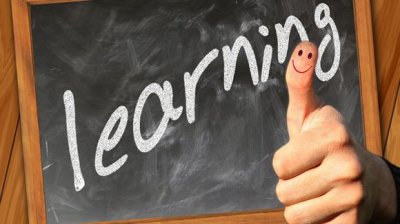
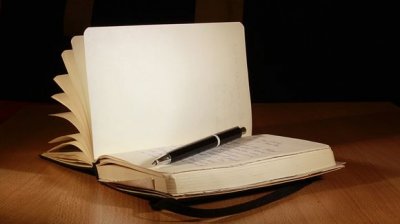
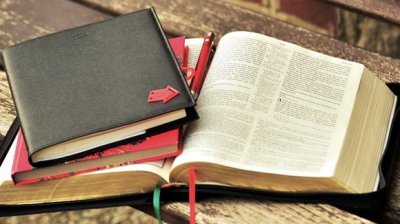
 学而思英语怎么样?效
学而思英语怎么样?效 小学六年级英语课堂游
小学六年级英语课堂游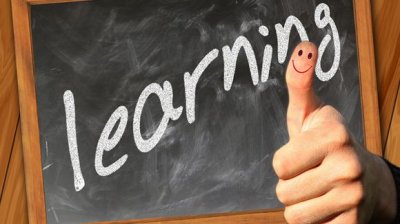 小学三年级起点英语听
小学三年级起点英语听 小学二年级英语学习资
小学二年级英语学习资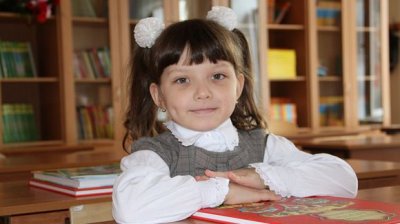 小学二年级英语教材知
小学二年级英语教材知 小学英语教学案例范文
小学英语教学案例范文 人教新版五年级英语上
人教新版五年级英语上 小学六年级毕业英语试
小学六年级毕业英语试 二年级英语培训机构的
二年级英语培训机构的 六年级下册英语重点知
六年级下册英语重点知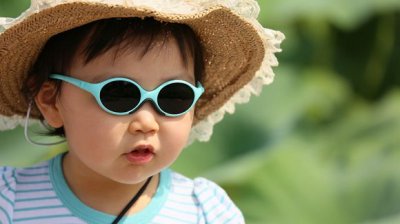 二年级上册英语期中试
二年级上册英语期中试 如何学好五年级英语英
如何学好五年级英语英 二年级英语学习的侧重
二年级英语学习的侧重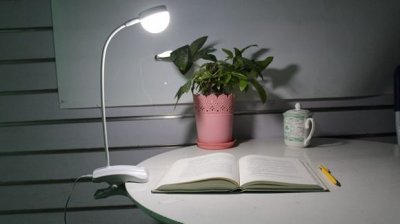 小学二年级下册英语对
小学二年级下册英语对 小学简单的英语游戏分
小学简单的英语游戏分 “别人家父母”谈教育
“别人家父母”谈教育